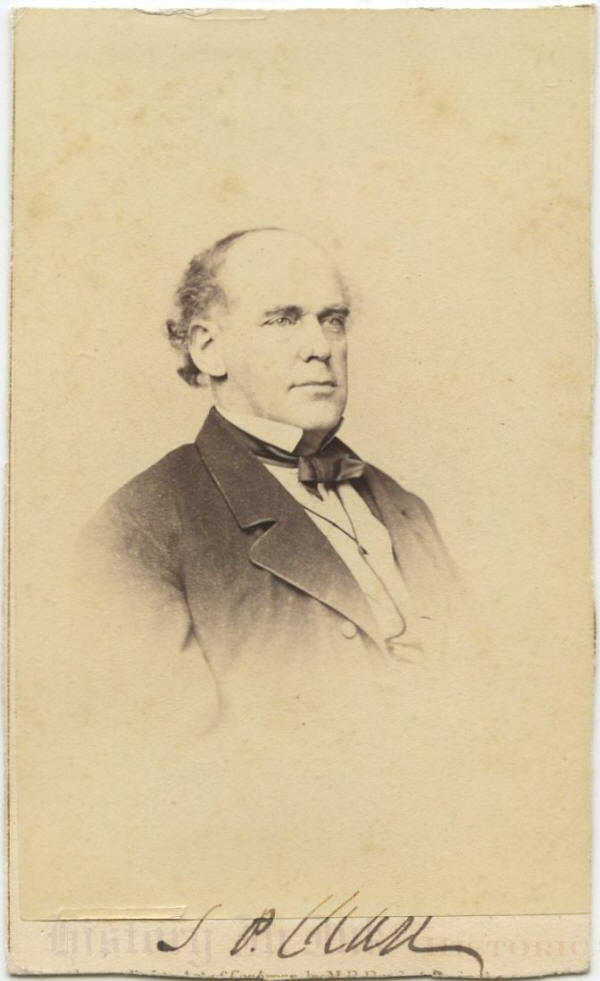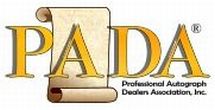2129406
Salmon P. Chase
Mathew Brady carte de visite of Chase
likely signed as Chief Justice of the United States
Salmon Portland Chase, 1808–1873. Chief Justice of the United States, 1864–1873; Secretary of the Treasury, 1861–1864. 2¼” x 3½” carte de visite portrait of Chase signed S. P. Chase.
This is a compelling image of a clear-eyed, confident Chase by the renowned Civil War photographer Mathew Brady, whose portrait gallery stamp appears on the back.
Chase likely signed this CDV as Chief Justice of the United States. A proprietary tax stamp on the back dates the photograph itself to between August 1, 1864, when the photograph tax was enacted, and August 1, 1866, when it was repealed. Chase resigned as President Abraham Lincoln’s Secretary of the Treasury in June 1864, before the tax was enacted. Some 3½ months later, Chief Justice Roger Brooke Taney died. On December 6, 1864, Lincoln nominated Chase to be Chief Justice, and the Senate confirmed the nomination the same day. Chase was commissioned and took his seat on the Supreme Court on December 15, 1864. Given the short period between the enactment of the photograph tax and Chase’s commission as Chief Justice, it is likely that Chase signed this photo as Chief Justice, although one cannot know for sure because the photo is undated.
The blue tax stamp itself is a bit of interesting history. As the Civil War progressed, demand increased for photographs of both officers and rank-and-file soldiers and their family members. Using the slogan “You cannot tell how soon it may be too late,” Brady prompted parents to buy photographs of their sons before they went off to war—in case they did not come back alive. Congress noticed the demand, and the Bureau of Internal Revenue enacted the “photograph tax” to raise revenue to help finance the war. Other widely-used products such as tobacco and alcohol were charged a “proprietary tax.” Since no photograph tax stamps were ever printed, typically proprietary or playing card stamps were used on photographs instead. The photograph tax was short lived because photographers petitioned Congress to repeal it on the grounds that their expenses were already high and that they bore too much of the public tax burden.
The stamp on this photograph is a pre-cancelled Scott # R13c 2¢ stamp. Stamps were pre-cancelled with either a cross, as this one was, or a slash.
Chase has signed this photo in black steel-nib pen at the bottom. The signature is mostly on the card but goes onto the edge of the mounted photograph. The piece has been trimmed from the original 2½” x 4” size, perhaps for framing, but part of Brady’s copyright notice still shows at the bottom edge on the front in addition to his full Washington, D.C., portrait gallery logo on the back. An old pencil price notation and a mounting remnant are on the back. Overall this piece is in very good to fine condition.
Chase’s signed cartes de visites are scarce. As a Brady photograph, this piece is extremely desirable despite the trimming. With proper framing, the defects would disappear, and the piece would be stunning.
Unframed. Please ask us about custom framing this piece.
This item has been sold.
Click here to see more Cabinet Members’ and Civil War autographs.








